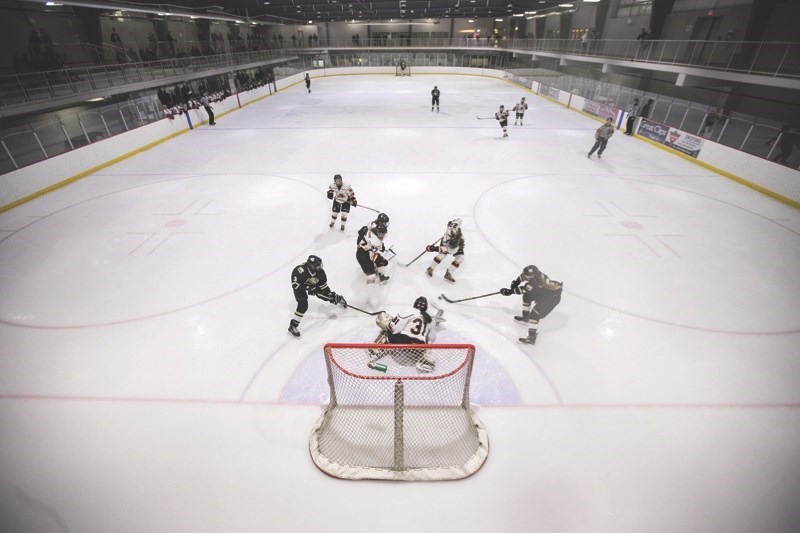Foothills County has implemented technology at the Scott Seaman Sports Rink that reduces the amount of energy and greenhouse gas emissions needed to flood the ice surface.
An energy audit was completed by municipal energy manager Adeniyi Adeaga in January 2020 as part of an ongoing initiative by Foothills County. When he visited the arena, Adeaga admitted that he was confused about why hot water needed to be used to flood the ice – knowing next to nothing about hockey and facility upkeep.
“Flooding with hot water had been my own issue when I had done the audit,” he said, explaining that he had heard of REALice technology before. “I put more interest into it, I researched into it.”
“The facilities manager[s] – all they’ve known for decades is to use hot water to flood the rink, because that is something that no one has cared to jump into."
Traditionally, rinks are flooded with hot water, frozen and then scraped with a zamboni. This is because hot water has less oxygen than cold water. Oxygen can produce air pockets on the ice, which results in an uneven skating surface.
In August 2021, a REALice device was installed at Scott Seaman. According to a press release from the County, the device works by removing dissolved oxygen from water using pressure and vortex technology, eliminating the need for it to be heated.
It is estimated that the device will save 31,280 kWh in electricity and 245 GJ in natural gas per year.
Adeaga said that when considering implementing the technology County staff visited four different facilities that had REALice, including WinSport, Canada Olympic Park in Calgary.
“We learned from their experiences – why they use it, how it had been performing, the ice quality,” he said.
With the technology, the ice is now flooded with water at a temperature of 85 degrees Fahrenheit, compared to the previous 160 degrees Fahrenheit, saving a significant amount of energy.
The project was funded in part through a grant from the Municipal Climate Change Action Centre, according to the release.
The goal is to work toward moving County facilities toward net zero emissions in accordance with the federal government’s plan to be net zero by 2050, Adeaga said.
Other projects underway to accomplish this at Scott Seaman Sports Rink include a building automation system for energy system control, a variable frequency drive for pumps and fans and ice plant waste heat recovery for space and water heating.
Adeaga said that the implementation of this technology is already under construction and explained that the excess heat from the ice making plant will be collected and used to heat the building itself as well as the water.
To his knowledge, the Scott Seaman Sports Rink will be the first facility in Alberta to make use of this technology, Adeaga said.
LED lighting and motion sensors for lighting and thermostats have also been installed in the Blackie, Cayley, Priddis, Heritage Pointe and Longview firehalls, as well as the Millarville and Aldersyde public works shops.
“We believe we have to do something to mitigate the climate impact that greenhouse gas emissions from our activities have cost,” he said.




